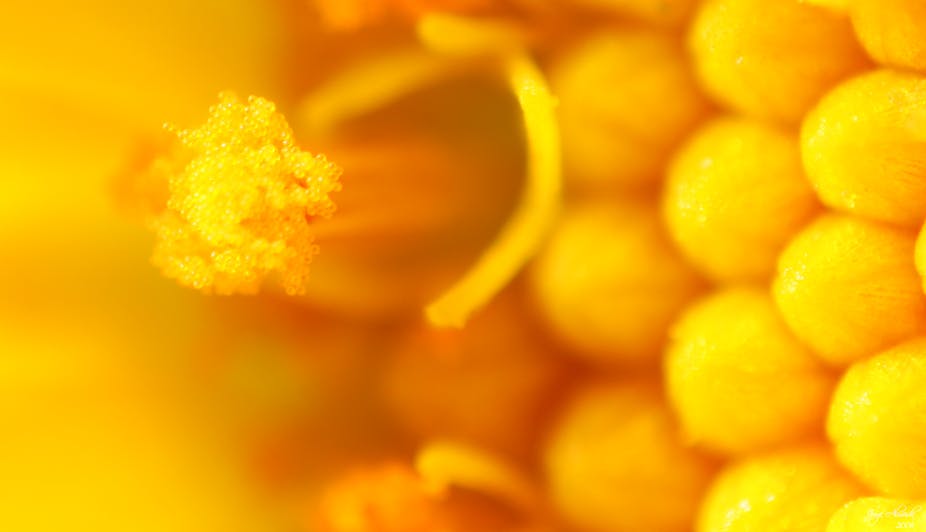The history of science is full of episodes when a seemingly ludicrous theory is ridiculed, but then slowly gathers evidence and support to move from the fringes to the heart of the scientific consensus. Examples include Darwin’s theory of evolution by natural selection, the theory of plate tectonics that control the movement of Earth’s crust and, most recently, the Big Bang theory of the birth of our universe.
All these theories, even though initially mocked, came from respectable academics. It is rare for someone from outside the relevant scientific circles to make a wild stab in the dark and hit upon something that just happens to have a thread of truth to it. But one of these occasions involved a US intelligence officer.
Strange weather
In September 1981 Alexander Haig, the then US secretary of state, made a stunning allegation. He claimed to have evidence that Soviet-backed forces in Vietnam and Laos had been waging chemical warfare on villagers in those countries. A dossier, released shortly after, documented eye-witness accounts – dating back to 1977 – of aircraft spraying areas with a substance that left vegetation littered with small yellow spots. Far worse were reports of horrific symptoms in the exposed populations: people who suffered stomach cramps and vomiting, before dying. This, according to a lab the US government employed, was due to deadly trichothecene toxins present in the yellow material that rained down on the villagers.
The seriousness of the allegations – with the US accusing the Soviets of breaching the Geneva Protocol on the use of chemical weapons – warranted the corroboration of evidence. So samples of the yellow substance were re-tested in labs throughout the world. First military scientists at UK’s Porton Down – and then others – found something surprising: the “yellow rain” contained, primarily, pollen.
Stranger still, the pollen was not complete. It had been stripped of its proteins and contents, leaving a largely empty shell.
Faced with this unexpected finding, Sharon Watson, a US intelligence agent, proposed an explanation for the role of pollen in the mix: that it had been added to aid the dispersal and delivery of the toxins.
As Watson told a Washington press briefing in 1982: the agent initially came down wet, where it was first exposed to the skin. As the toxins were dissolved in a solvent, they were absorbed by the skin very quickly. But as the agent dried, Watson said, “a second aerosol effect” was created from kicking up the particle-sized pollen-like dust, which then lodged in the bronchii of the lung.
Watson told the briefing:
We’ve shown in studies with animals that the internasal LD-50 [the dose lethal to 50% of an exposed population] for the trichothecenes is much lower than we would have expected, and that the trichothecenes, if they come in contact with the mucous membrane, were very rapidly absorbed and are very toxic by this route.
So if you could bring the compound into contact with the mucous membranes of the bronchii, then it’s a very effective way of getting it across. So there are two different ways that the compound is absorbed. It’s [a] very clever, clever mixture.
In short, the intelligence service thought using pollen made the poison a lot more effective.
Local produce
But where did it come from? The cause of the yellow rain turned out to be something much more mundane – honey bee faeces.
Closer inspection showed that the pollen matched that from the flora in the area it was collected and was indistinguishable from local bee poo. The hollowing out of the pollen and lack of proteins was due to the bees having digested the pollen, before it was defecated and left on the leaves. The heavy yellow rain was explained by bees emerging from hives en masse, as they are inclined to do after inclement weather, and defecating (they never do this in their hives).
Meanwhile, the same labs that identified the pollen also failed to find any trace of trichothecence mixed with the pollen, which left the US theory that the yellow rain was a diabolical means of delivering chemical weapons in tatters. Whatever trichothecene was detected may have been naturally occurring, because the fungi that produce it were common in South-East Asia. Some eye witnesses still insist that chemical attacks did occur, but evidence doesn’t seem to support the use of pollen-based warfare as means of delivering those chemicals. Despite this, however, the US government hasn’t retracted its allegations, stating that the issue hasn’t been fully resolved.
The grain of truth
I always found this story with its scientific and political twists quite appealing. Little did I know that I would find myself working on Watson’s crazy idea about delivering chemicals using pollens. It turns out there was a grain of truth in it.
My colleagues and I have been stripping pollen spores down to leave the indigestible shell – to bees and man alike – called an exine. These exines are incredibly tough. They have even been found intact, along with fossils, in sedimentary rock.
We have loaded these empty pollen shells with a variety of compounds including drugs, edible oils and medical imaging agents to see if they can provide a new way of delivering these chemicals to places of interest in the human body.
Our results show that pollen capsules can indeed be used to trap chemicals and deliver them into the body. Exines provide chemical and physical protection to their surrogate cargoes. What’s more interesting is that exine shells appear to assist in the absorption of their contents across a mucous membrane. Just as Watson had suggested they might. The result, then, is a potential drug-delivery device, which was conceived by one US intelligence agent.

